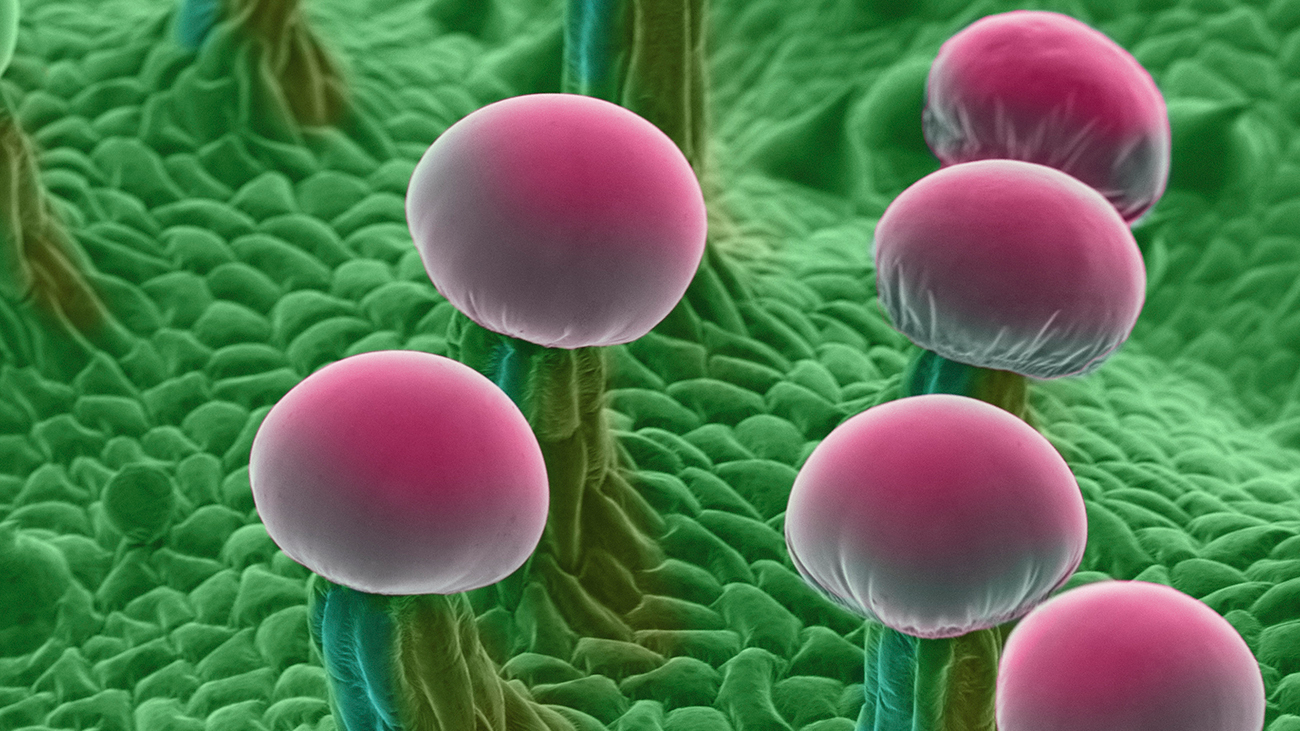Rochester Institute of Technology professor and science photographer Ted Kinsman captures an unseen side of Cannabis in his new book, “Cannabis: Marijuana Under The Microscope”. These microscopic images capture a close up view of Marijuana. We spoke with Ted to find out more about his scanning electron microscope photos. Following is a transcript of the video.
This isn’t some alien planet
It’s cannabis!
These images were taken with a scanning electron microscope.
It's not your ordinary microscope.
It fires electrons at a sample.
Which creates a high-resolution image by scanning the surface topography.
As well as data about the surface composition.
"Cannabis: Marijuana Under the Microscope" is a book by Ted Kinsman.
He's a photographic sciences professor at Rochester Institute of Technology.
These fascinating photos reveal a world beneath the surface.
Ted Kinsman: "I like to think what a person would see if they were just a few microns tall."
But Ted doesn't just photograph Cannabis.
Ted Kinsman: "I look for things that haven't been done recently, or haven't been done well, or even done at all".
This is a real bedbug, in excruciating detail.
And this close up reveals the many eyes of a spider.
Ted has even photographed human brain cells.
Each image starts out as black and white.
And has to be colorized by hand.
Ted Kinsman: "I pick visually exciting colors."
"I'm trying to make science visually exciting and appealing to the general population".
Ted paints the THC-containing cannabis sacs a bright color in order to stand out.
This image of pond water shows bacteria, algae, and unidentified protozoa.
And this is what a pumpkin leaf looks like on a microscopic level.
Samples can take several hours to prepare.
Each one has to be completely dried so that water vapor won't obstruct the image.
Then placed in a vacuum chamber to be photographed.
But, there is no camera involved.
Instead, samples are conductively coated in gold and bombarded with electrons.
Then a computer records how many electrons are scattered from each point on the sample.
Scanning a sample takes about four minutes.
The data is collected to a file and an image is generated.
Ted continues to photograph worlds that are rarely seen.

